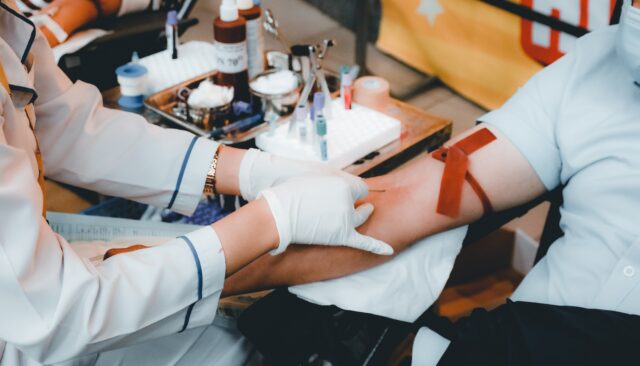
Researchers Give People Lab-Grown Blood in World’s First Clinical Trial
Lab-grown blood could fill this gap—and researchers are already testing the stuff in human study participants.
To make the blood, RESTORE scientists obtain a standard pint-sized blood donation from a human donor. They then use magnetic beads to separate about 500,000 stem cells out from the rest of the tissue. Over the span of three weeks, these stem cells are encouraged to multiply until they reach a population of about 50 billion, approximately 15 billion of which are considered to be at the appropriate stage of development for transplant. Because these cells are at this specific stage, researchers actually expect recipients’ bodies to accept the lab-grown blood at a higher rate than they would a standard blood transfusion.

(Photo: Nguyễn Hiệp/Unsplash)
Their theory seems to track so far—though the team still has a long way to go. RESTORE researchers have officially transfused the lab-grown blood into two healthy recipients, each of whom received five to 10 milliliters (approximately one to two teaspoons). Though RESTORE hasn’t shared when exactly the transfusions took place, both recipients are said to be “well and healthy” with “no untoward side effects” having been reported so far. At least eight more clinical trial participants will receive lab-grown blood transfusions at least four months after receiving a standard blood transfusion, which will allow the RESTORE team to compare physical reactions to each. Mild radioactive “tagging” of the lab-grown blood cells allows researchers to monitor which reactions are a result of the experimental transfusion.
“We hope our lab-grown red blood cells will last longer than those that come from blood donors,” said the study’s chief investigator Professor Cedric Ghevaert, consultant hematologist at the University of Cambridge and NHSBT, in a . “If our trial, the first such in the world, is successful, it will mean that patients who currently require regular long-term blood transfusions will need fewer transfusions in the future, helping transform their care.”
Though lab-grown blood cells are bound to be useful in specific contexts—such as situations requiring rare blood types—experts warn they won’t replace standard blood donations. Creating blood in a lab is expensive and time-consuming, while a standard donation costs the NHS approximately £130 and can be used relatively quickly.
“We should remember that the NHS still needs 250 blood donations every day…and the figure is rising,” said John James, chief executive of the Sickle Cell Society. “The need for normal blood donations to provide the vast majority of blood transfusions will remain.”
Now Read: